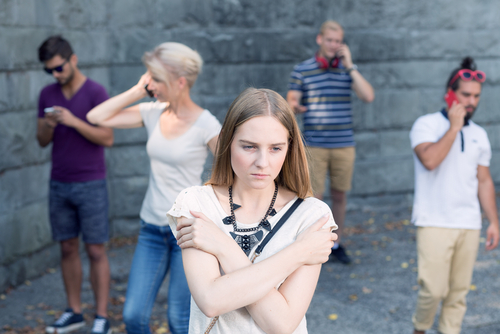
Anxiety is defined as “a feeling of worry, nervousness, or unease, typically about an imminent event or something with an uncertain outcome.” It is the body’s natural response to stress and will manifest differently in everyone. Experiencing feelings of worry, fear, sadness, overwhelm, etc. after becoming a parent is to be expected, but when these symptoms persist and become debilitating it could be indicative of postpartum anxiety. Research findings indicate that anxiety disorders in pregnancy and the postpartum period are more prevalent than previously thought, with about 20.7% of women meeting diagnostic criteria for at least 1 anxiety disorder and 5.5% meeting criteria for at least 2 anxiety disorders. Therefore, it should come as no surprise that postpartum anxiety is reported to affect about 1 in 5 new or new again mothers, making it highly common.
Signs and Symptoms
The timeframe for postpartum anxiety is longer than many assume, as it can occur at any time within the first 12 months following childbirth. The Cleveland Clinic provide examples of common signs and symptoms of postpartum anxiety some of which include:
- Physical symptoms:
- Disrupted sleep.
- Increased heart rate or heart palpitations.
- Nausea or stomach aches.
- Being unable to breathe or feeling short of breath.
- Loss of appetite.
- Trouble sitting still.
- Muscle tension.
- Emotional symptoms:
- Inability to relax or keep calm.
- Racing thoughts, especially about worse-case scenarios.
- Obsessing over irrational fears or things that are unlikely to happen.
- Difficulty focusing or forgetfulness.
- Irritability.
- Feeling on edge or fearful.
- Behavioral symptoms:
- Avoiding certain activities, people, or places.
- Being overly cautious about situations that are not dangerous.
- Checking things repeatedly.
- Being controlling.
Postpartum anxiety may interfere with a person’s ability to bond with their baby, which can negatively impact a baby’s mental and physical development. If left untreated, postpartum anxiety may lead to severe consequences such as infant neglect and, in extreme cases, infant death.
Treatment
The treatment options for postpartum anxiety reflect those used for other types of anxiety disorders. Medical News Today explains that the two main treatments for anxiety disorders include psychotherapy and medication. Further, it is becoming increasingly common to integrate traditional psychotherapeutic methods, such as cognitive behavioral therapy (CBT), dialectical behavior therapy (DBT), psychodynamic psychotherapy, interpersonal therapy (IPT), and more, along with holistic treatment modalities (e.g., meditation, aromatherapy, etc.) into postpartum mental health recovery plans. For some, integrating a combination of psychotherapy and medication may be recommended. The different types of medications prescribed for anxiety disorders include selective serotonin reuptake inhibitors (SSRIs), serotonin and norepinephrine reuptake inhibitors (SNRIs) and norepinephrine and dopamine reuptake inhibitors (NDRIs). However, medication is not always needed, and for those breastfeeding it is prescribed with caution as medication can cross over from the bloodstream into breast milk and potentially harm a child who is breastfed. Anyone struggling with postpartum anxiety will require a nuanced treatment plan that carefully incorporates the best possible treatment methods specifically geared to each person’s distinct needs.
Treatment In Calabasas
Calabasas is a city in California. It is a well-known suburb of Los Angeles, located west of the San Fernando Valley and north of the Santa Monica Mountains. Over the past decade, the city of Calabasas has grown in its reputation for luxury as well as for privacy which makes it a hidden gem for residential living for society’s elite, and one of the most desirable destinations in Los Angeles County. It is also home to a plethora of highly qualified mental health clinicians providing an array of therapeutic services and treatment options.
The information above is provided for the use of informational purposes only. The above content is not to be substituted for professional advice, diagnosis, or treatment, as in no way is it intended as an attempt to practice medicine, give specific medical advice, including, without limitation, advice concerning the topic of mental health. As such, please do not use any material provided above to disregard professional advice or delay seeking treatment.


